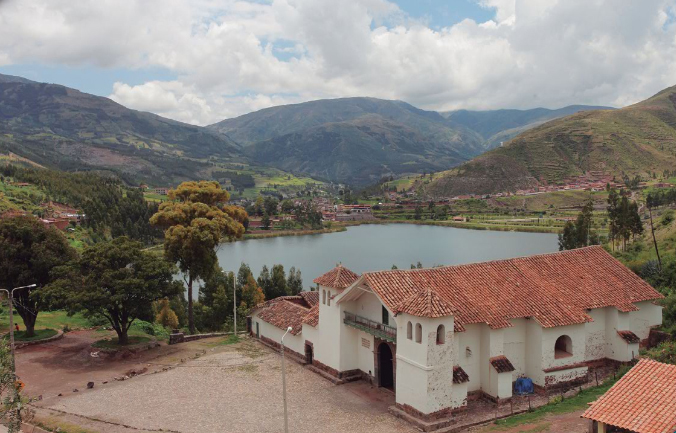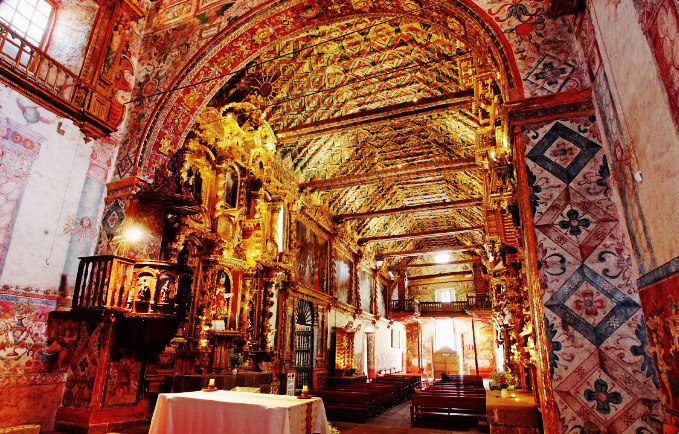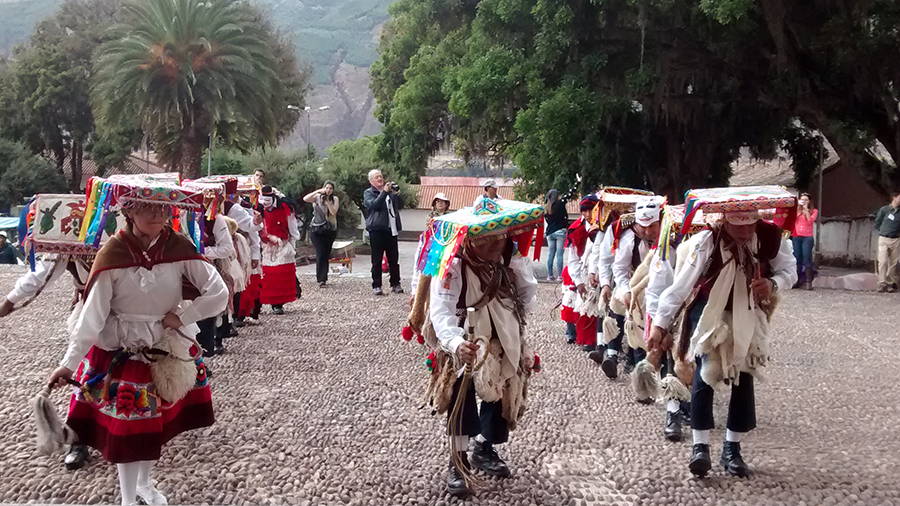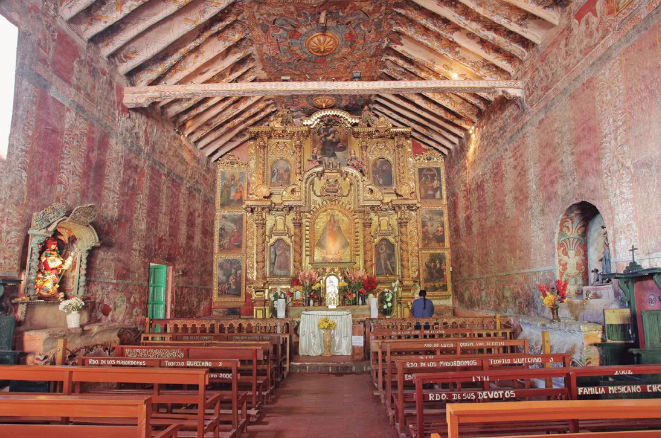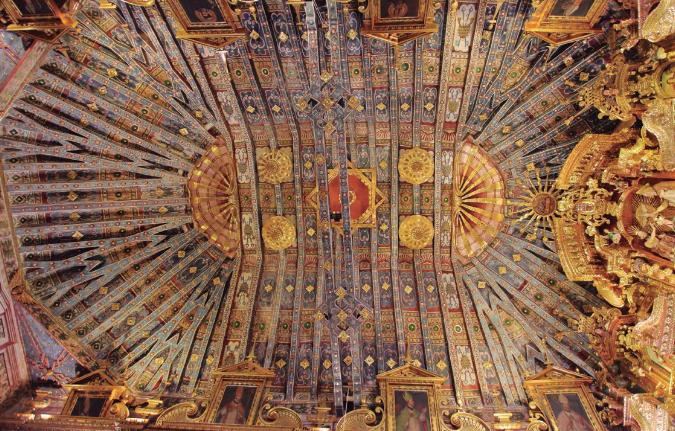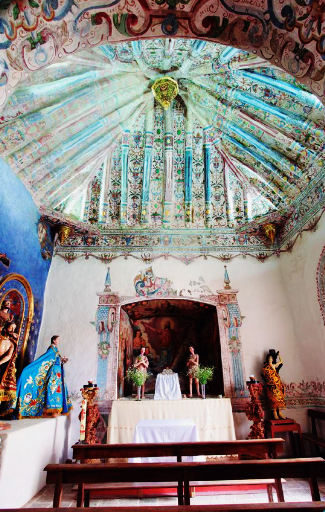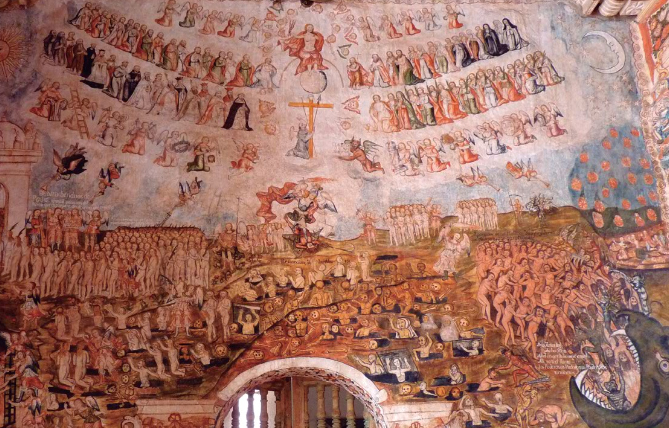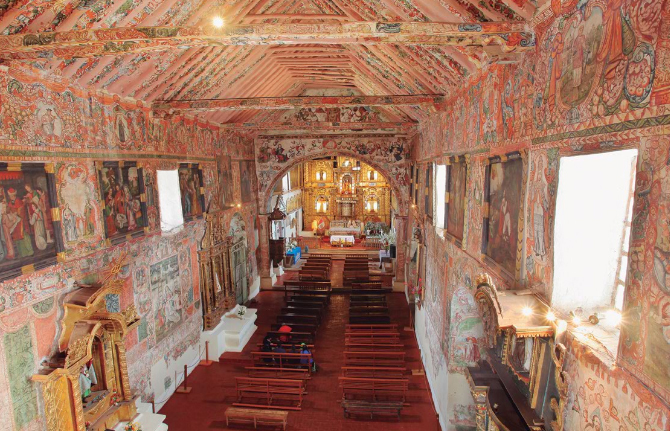The Andean Baroque Route is a picturesque half day tour outside the city of Cusco which primarily focuses on churches that belong to the Andean Baroque artistic movement, including the church of San Pedro de Andahuaylillas often called the “Sistine Chapel of the Americas”. The Andean Baroque Route takes in beautiful views, tall mountains, quaint villages and churches full of colorful paintings with lots of history. These rarely-visited churches are humble on the outside but impressive on the inside and were structured and designed to convert the local people of the Altiplano to Christianity during the Colonial times.
The Andean Baroque Route in Cusco
Specialist Guide Lisy Kuon
Bright and early on Friday morning I met the rest of the group at the airport in Lima to catch our 6:35am flight to Cusco. Here we met Lisy Kuon, Aracari’s specialist guide on Colonial History and Architecture, who would be our guide for the day. Lisy studied Humanities and Anthropology at the National University of Cusco and the University of Washington in Seattle, specialising in expressive anthropology, now known as visual culture, of the Southern Peruvian Andes from the sixteenth to eighteenth centuries. Her focus for the last 40 years has been on colonial art from Cusco and Puno. Learn more about Lisy Kuon.
Departing Cusco
As we were leaving Cusco, we passed through the San Sebastián district and Lisy pointed out the Iglesia de San Sebastián. As we traveled farther southeast away from Cusco the scenery transformed from urban to more and more green, mountainous, and rural. We passed through a small town called Oropesa, famous for baking bread in large ovens made out of wood and stone.
Rumiqolca Archaelogical Site
Our first stop was an archaeological site called Rumiqolca. In the 9th-12th centuries it functioned as an aqueduct that provided water to the city of Wari de Pikillaqta. The aqueduct transported water from one mountain down through the valley to the other side. When the Incas arrived, they tore down the middle of the aqueduct to cut off the water supply. The Incas created what was considered the “entrance” to the valley south of Cusco. It was interesting to see the difference between the architectural style of the Wari and the neatly placed stones of the Inca. As we continued our journey to the next location, Lisy pointed out various lagoons and villages on the way. She is very knowledgeable, and I found it really interesting to hear about what kind of work the villagers do in each area and where the names of the villages come from.
Iglesia de Canincunca
The next place that we went to was the Iglesia de Canincunca which was constructed near the end of the 16th century as a dedication to la Virgen Purificada. The location was chosen because it was previously along the only route from Cusco to Puno. As we were walking towards the entrance, we could see the Urcos lagoon behind the church which created a very scenic view. Prior to the construction of the church it was a huaca from the Pre-Incan Wari period and later an Incan shrine. The church, built of Incan stone, looks small and simplistic on the outside; however, inside the walls and ceiling are covered with baroque-style murals. Lisy mentioned that it will be restored in the near future, which undoubtedly will make the detailed colorful designs look all the more lovely.
Iglesia de Huaro
The next church we visited was the Iglesia de Huaro. Built near the end of the 16th century and restored in January 2007 by the World Monuments Fund, it is located in a beautiful area surrounded by mountains. Now the wonderful murals by Tadeo Escalante, one of the last masters of the Academy of Cusco, are more impressive than ever. The murals demonstrate the Andean baroque style that is present in many churches in the region that date back to the colonial era. Across the plaza from the church, there is a luthier where the local children learn how to make guitars and mandolins. Music is very important to the history and the people in Huaro and Lisy told us that the church hopes to organize baroque concerts using the organ and instruments made in the local luthier.
San Pedro de Andahuaylillas Church
Last but certainly not least was the amazing church of San Pedro de Andahuaylillas often called the “Sistine Chapel of the Americas”. The church was built at the beginning of the 17th Century by the Jesuits. The interior of the church is decorated with murals by Spanish artists, Esteban Murillo and Luis Riaño. The walls and ceiling are covered with intricate paintings that tell stories about the path to glory and the path to hell. World Monuments Fund began working on the restoration in Andahuaylillas in 2008. The project focused on restoring the main facade, choir, chapels, and a youth training program designed to promote awareness of cultural heritage. It was inaugurated in 2012 after extensive work undertaken by the WMF. The beautiful original organ was restored as well and is now fully functional although only one person in the town knows how to play it.
Andean Music and Dance
Our tailormade tour finished up with moving performances by two dance groups. Capac Colla danced, sang, and played traditional Andean music inside the Iglesia de Andahuaylillas. Capac Negro danced in the plaza outside the church. The dances were passed down through generations and their mission is to dance as a way to preserve the culture of their ancestors. After these great performances we went to lunch at the restaurant Casa de Campo in Andahuaylillas. The restaurant was quiet and the meal was semi-buffet style. Like much of our journey we were surrounded by mountains. We then returned to Cusco.
Visit the Andean Baroque Route with Aracari
The Andean Baroque Route can be visited as a half day tour with Aracari and accompanied by specialist guide Lisy Kuon. Contact us for more information and travel advice on cultural activites in Peru that we can arrange as part of a private, tailormade trip to Peru.

